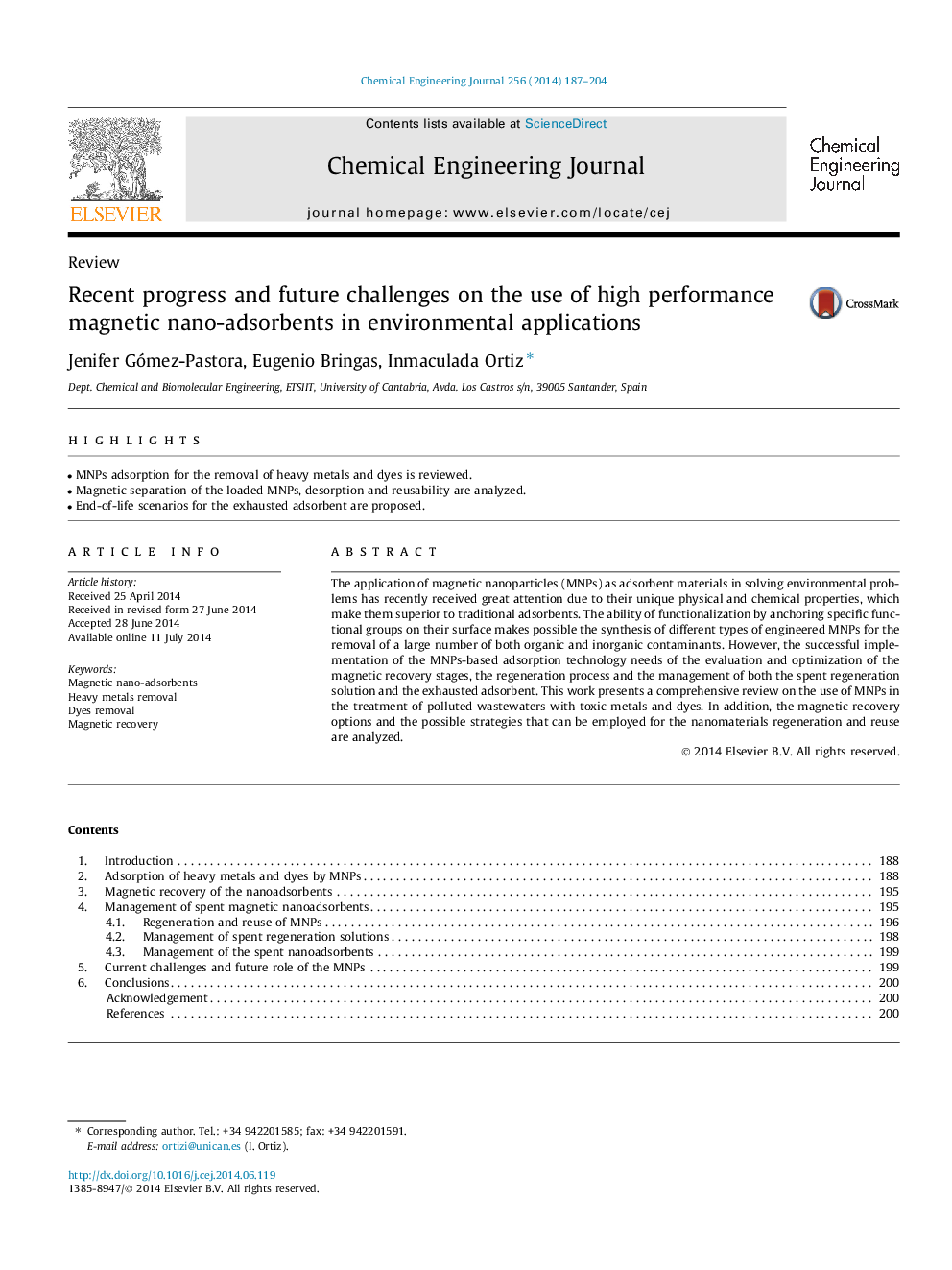| Article ID | Journal | Published Year | Pages | File Type |
|---|---|---|---|---|
| 146987 | Chemical Engineering Journal | 2014 | 18 Pages |
•MNPs adsorption for the removal of heavy metals and dyes is reviewed.•Magnetic separation of the loaded MNPs, desorption and reusability are analyzed.•End-of-life scenarios for the exhausted adsorbent are proposed.
The application of magnetic nanoparticles (MNPs) as adsorbent materials in solving environmental problems has recently received great attention due to their unique physical and chemical properties, which make them superior to traditional adsorbents. The ability of functionalization by anchoring specific functional groups on their surface makes possible the synthesis of different types of engineered MNPs for the removal of a large number of both organic and inorganic contaminants. However, the successful implementation of the MNPs-based adsorption technology needs of the evaluation and optimization of the magnetic recovery stages, the regeneration process and the management of both the spent regeneration solution and the exhausted adsorbent. This work presents a comprehensive review on the use of MNPs in the treatment of polluted wastewaters with toxic metals and dyes. In addition, the magnetic recovery options and the possible strategies that can be employed for the nanomaterials regeneration and reuse are analyzed.
